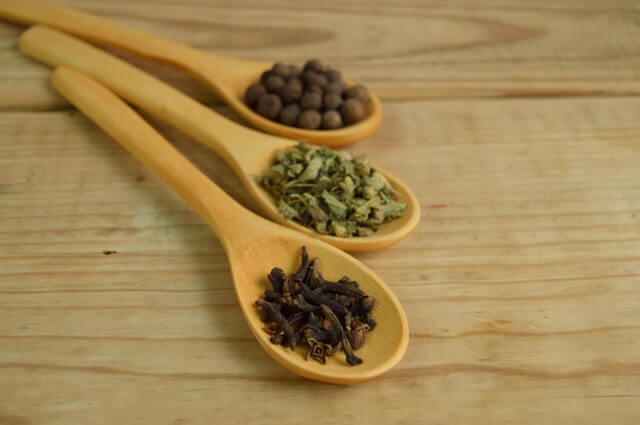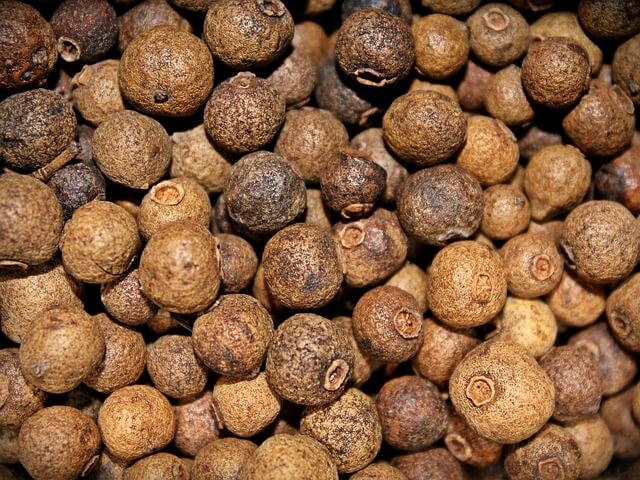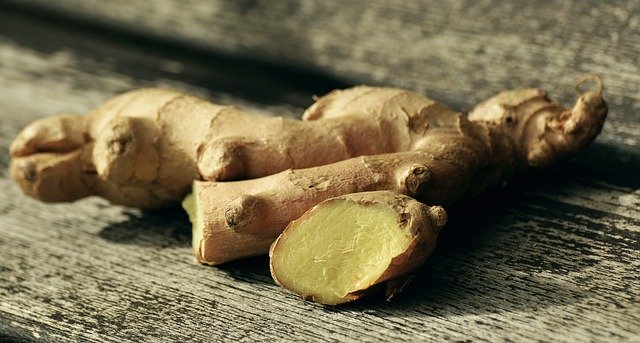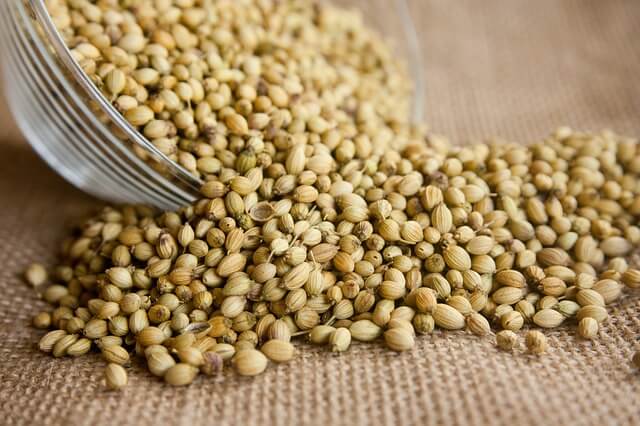Have you ever had a chance to take a look at the most expensive spices in the world? If so, you’ll definitely have heard about cardamom. This spice will also be familiar to you if you’re from South Asia, especially from the Indian subcontinent. This is one of the most versatile spices and is popularly used in both savory and sweet dishes. Despite its popularity, cardamom is very expensive, as it only grows in South Asia, almost exclusively in India, Indo China, Guatemala, Tanzania, and Sri Lanka. Therefore, the chances of running out of cardamom in your pantry or your nearby stores is likely to be pretty high.
What is Cardamom?

Belonging to the ginger family, cardamoms are an unusual type of spice. Like ginger, cardamom is best known for its unfamiliar flavors, with a mixture of fruitiness, nuttiness, a pinch of herbal, woodiness, and citrus flavor. It’s a party of these flavor in one pod. Its very strange flavor is something that is tough to imitate. The flavor is also known for being very strong and thus one has to be cautious and use it in the right amounts, which, done correctly, can turn an ordinary dish into an extraordinary one. As mentioned earlier, they are mostly grown in India, Sri Lanka, and Guatemala.
Cardamoms often thrive in rainforests and can grow up to eighteen feet tall. There are two main types: black and green. The one we use normally in dishes and are familiar with its flavor is the green kind. The black cardamom has a completely different flavor to the green variety. They tend to have a mint-like taste to them with a smoky scent. However, they could be used as a substitute if the green ones are not available.Why is it so expensive?
Like saffron and vanilla, cardamoms are known to be one of the most expensive spices. This is largely because it must be collected by hand. It is an exceptionally labor-intensive process in which the pods are hand-picked soon before maturing. The larger the pods, the more intense their color tends to be, and the higher their prices become. After reaping, they tend to need special care to harvest this spice once again. Such labor, attention, and care leads it to be more costly than the ones harvested through automated machines. Generally, an acre of cardamom will produce approximately 50 to 150 pounds of the spice. Moreover, we need to keep in mind that the demand for this particular spice has been increasing, thus, according to the law of demand and supply, the price of it is rising accordingly.
Substitutes for Cardamom
1. Cinnamon

Both cardamom and cinnamon have beautifully complex flavors that are comparable to one another. If anything can successfully imitate the flavor and aroma of cardamom, it’s cinnamon. With its fruity and earthy flavor, it is best known for its delicious earthiness. Additionally, cinnamon provides the same warmth we can taste in cardamom.
2. Cloves

Another amazing alternative to replicate the flavor of cardamom is cloves. Normally, cloves have quite a smokiness to them and a pungency that really hits the nose but also has mild and palatable flavors to satisfy the taste buds. Moreover, like cardamom, cloves can also be used in both savory and sweet dish and has the ability to successfully substitute green or black cardamoms.
3. Nutmeg

Nutmeg is a very versatile spice that can be used in both sweet and savory dishes. If you ever had Indonesian cuisine you will know they much love this spice, and for good reason. You’ll also be familiar with nutmeg if you know and love the classic pumpkin pie recipe, which nutmeg is a key element of. However, nutmeg can also successfully be used to replicate the earthy and fruity flavor of the cardamom. Plus, it’s easy to use in place of cardamom because you can use the exact same amount called for by your recipes. But be warned: it cannot 100% mimic the same complex flavor that cardamom has. Still, it is a widely available spice that can somewhat imitate the flavor of cardamom, and at a much cheaper price to boot.
4. Allspice

Also known as the Jamaican pepper and made solely from the dried-up, unripe, crushed seeds of the Pimenta Dioica tree, the allspice is a berry-like spice and has an adaptable flavor (like that of cinnamon, nutmeg, and clove) that works well in a variety of recipes. Like cardamom, allspice can be used in sweet as well as savory dishes due to its amazing peppery, sweet, and citrusy flavor and can also be used in the same amounts as you’d use cardamom in recipes to enhance the taste of your dish. Although the flavor of cardamom is undoubtedly inimitable, allspice comes pretty darn close in many regards. Note, allspice is more powerful in terms of flavor than cardamom, and you must be very careful and add less (if necessary) than the amount your original recipe requires.
5. Ginger

Being a close cousin of the cardamom, ginger can be a good substitute for cardamom in some cases. Plus, it is one of the cheapest and easiest to find options on our list. If you are out of all other options, you can always rely on your trusty ginger to work (almost) the same magic as cardamom, especially since they are close relatives. Ginger tends to have the same earthy flavor of cardamom along with the sweet undertones and sour bite. Additionally, a blend of ginger and cinnamon can be another amazing flavor combo that is considered to perfectly imitate the flavor of cardamom.
6. Coriander Seeds

Coriander seeds tend to have a nuttiness and citrus-like flavor that is similar to that of the cardamom. But if you are choosing this option to add in your recipe, you need to know to take it easy on the quantity. For savory dishes, you need to use a little bit more than you tend to use for sweet dishes. Also, it is said that a mixture of coriander seeds (especially ground) along with cumin tends to provide the same earthy taste of cardamom and goes amazingly with any curry dish.
7. Cumin

One must know that cumin can only be used for savory dishes and is only very rarely used in sweet dishes. Mostly found in Asian and Mexican cuisines, cumin, like cardamom, offers delicious earthy flavors with aromatic undertones and gives life to subtle flavors. Additionally, cumin is a great substitute for black cardamom, as the green kind (as mentioned earlier) tends to offer a sweeter, floral flavor.
Other Alternatives- A Mixture of:
1. Cloves & Cinnamon
To mimic the essence of cardamom in meat or fish dishes, a great option is to mix cloves and cinnamon together. This is because cloves tend to have a bitter taste that goes well with the sweet earthiness of the cinnamon. But keep in mind that if your recipe requires only a teaspoon of cardamom, you need to use half a teaspoon of cloves and cinnamon.
2. Cinnamon & Ginger
A cinnamon and ginger combo also works extraordinarily well in imitating the taste of cardamom. As cinnamon has sweeter undertones, it complements the mild, spiciness of the ginger very nicely. Remember to use equal amounts of both to best replicate the flavor of cardamom.
3. Cinnamon & Nutmeg
Cinnamon and nutmeg both have a very powerful flavor, so combining them both unsurprisingly produces amazing results. Nutmeg has a sweet flavor which also complements the sweet, woodiness of cinnamon. A blend of these two can be used as an alternative means to imitate the flavor of cardamom in both savory and sweet dishes. Like with cloves and cinnamon, you should use half a teaspoon of cinnamon and nutmeg for one tablespoon of cardamom in your recipe.
4. Cloves & Nutmeg
Not only does nutmeg go amazingly well with cinnamon, but it also complements cloves beautifully to give a convincing cardamom flavor. Cloves are known to have a warm and strong flavor which complements the sweet flavor of nutmeg. Using the same proportion of cloves and nutmeg will help to achieve that classic cardamom flavor.
5. Cloves & Cinnamon
The combination of these two intricate flavors will undoubtedly help to mimic the ever sophisticated flavor of the cardamom. The intensity of cloves combined with the sweet earthiness of the cinnamon complement each other wonderfully, and makes a great addition to seafood or meat dishes. We recommend using half a teaspoon of each spice per one teaspoon of cardamom required.
6. Nutmeg, Coriander & Allspice
Try combining equivalent parts of nutmeg, coriander, and allspice and witness the magic. The result will definitely shock you. This mixture is known to effectively imitate the flavor and aroma of black cardamom. However, as these spices are powerful in terms of flavor they tend to become too overpowering if not used in the right amounts. It is generally best to use an equal amount of this mixture as the amount of black cardamom recommended to use in your recipe.
7. Nutmeg, Cinnamon, Clove & Allspice
Trust us on this. Combining these four spices is known to work well to reproduce the flavor of the green cardamom, especially for making sweet dishes. Note, you must blend four parts of nutmeg along with one part of cinnamon, cloves and allspice for best results.
Conclusion
As you can tell from the many options on our list, you have a lot to work with when subbing out cardamom for more convenient ingredients. Nonetheless, remember that it is not always possible to 100% replicate the flavor of the cardamom. Let us not forget that cardamom is pricey and also known as the ‘queen of spices’ for a good reason. But in case of emergencies, one should always have other options on hand and trust in their instincts that they will work wondrously.
